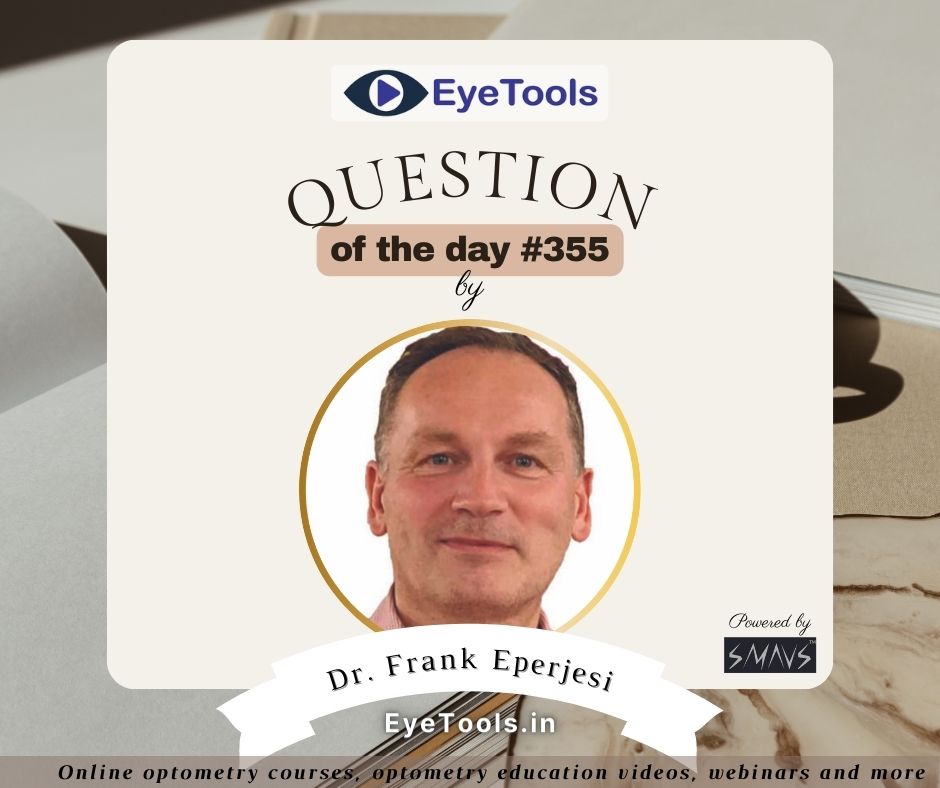
Welcome to question of the day #355
Eyetools question of the day #355
Occasionally new patients to my practice who have been successful varifocal wearers using lenses from elsewhere have problems with new varifocals I prescribe them even though the fitting heights and optical centres of the lenses are accurate. Do you have any suggestions?
There are many different types of varifocal lenses and the differences in their design could explain the problems you have indicated. A patient who has become used to a particular type of varifocal from a particular manufacturer may not get on with a similar powered lens from a different manufacturer.
Manufacturers engrave the front surface of their varifocal lenses with various symbols but these can be very difficult to locate and very difficult to identify. Even if the symbol is located and identified it has to be looked up in a table of symbols to identify the manufacturer. These tables themselves can be hard to find. A free identifier can be found here https://epic.thevisioncouncil.org/sites/default/files/progressive_identifier.pdf
My suggestion is to advise a varifocal lens from a manufacturer that you have experience of using before and to recommend a lens with the widest intermediate corridor and a widest reading zone that the patient’s budget will allow. Patients are more likely to get on with varifocal lenses that have a wide corridor and a wide reading area.
Something else to be aware of is increasing the reading add power. Patients often need new varifocal lenses because they need more power in the reading add. Increasing the reading add will often narrow the intermediate corridor and also narrow the reading area. Nothing can be done about this but the patient can be warned. The patient can be advised that because the reading power has to be increased, in order to help them read more clearly, the reading area will be smaller and that this may take time to get used to.
Preparing the patient in this way may help them adapt to an get on with their new varifocals.



1.jpg)



.jpg)
.jpg)



_(Instagram_Post).jpg)
.jpg)
_(1080_x_1080_px).jpg)


with_UP_Cabinet_Minister_Sh_Nand_Gopal_Gupta_at_OpticsFair_demonstrating_Refraction.jpg)
with_UP_Cabinet_Minister_Sh_Nand_Gopal_Gupta_at_OpticsFair_demonstrating_Refraction_(1).jpg)

.jpg)








.jpg)



.png)




